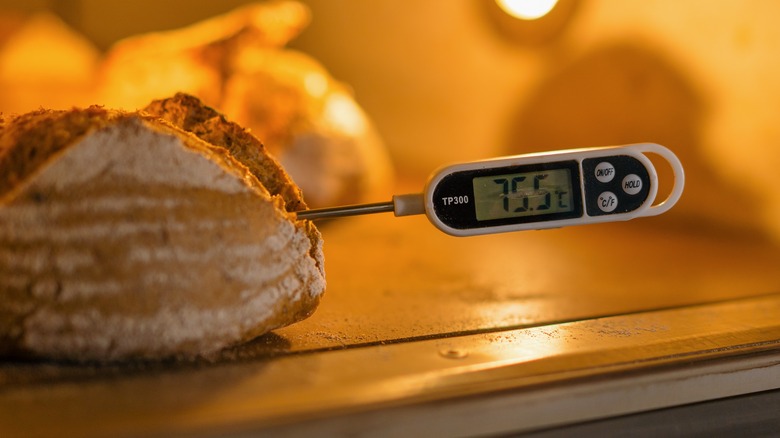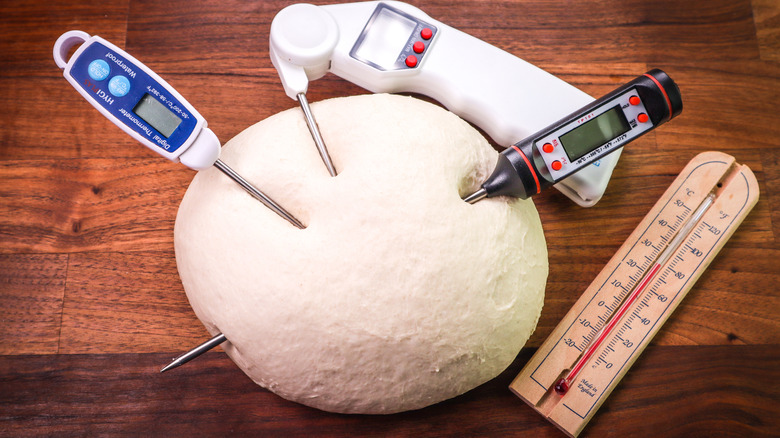The Key Temperature Consideration To Remember When Making Bread
Seasonal weather changes affect more than fruit and vegetable production. They impact your kitchen and most things out of it, particularly your homemade bread. Slight changes in your baking times, dough texture, or the amount of time it takes for your bread's dough to rise almost always trace back to temperature differences. So what should you consider?
Yeast is at the heart of bread dough and it accounts for that beautiful rise. Furthermore, yeast is extremely alert to temperatures. It especially loves hot, humid atmospheres and flourishes under such conditions. The higher the temperature the faster yeast ferments, giving speedy rise to your dough. So, say your kitchen grants optimum dough-raising temperatures of between 85 and 90 degrees Fahrenheit — just above room temperature — you can expect your bread dough to proof in about an hour.
However, higher temperatures than that can negatively affect fermentation. At the thermal death point, which is around 130 to 140 degrees Fahrenheit, yeast can no longer survive. Conversely, fermentation loses momentum during colder seasons. As yeast reacts more slowly, bread dough takes longer to rise. At around 40 degrees Fahrenheit, your kitchen's too cold to encourage proofing, which can be the biggest reason bead doesn't rise properly. Thus you may need a strategy that maintains consistent dough-raising temperatures despite the season.
How to make dough rise in a cold kitchen
One of the most effective ways bakers address fluctuating temperatures is by introducing a controlled heat source. For example, turning the oven light on encourages a steady temperature rise. If you give it about an hour, the oven temperature rises to around 76 degrees Fahrenheit and can reach up to about 100 degrees Fahrenheit, creating a conducive environment for your bread dough to rise.
Alternatively, you can place the dough atop a warm spot such as a refrigerator that's been running or a heating pad. A preheated microwave is also ideal, where you boil water inside it to create steam before replacing the water with bread dough. Otherwise, you can use our air fryer trick that makes the bread-baking process quicker. It works by preheating the air fryer to the lowest temperature or adjusting your air fryer to the "proof" setting.
Placing your dough in a preheated oven also works just fine. If you preheat it to 200 degrees Fahrenheit for approximately two minutes then switch it off, you can place your bread dough and leave it to proof effectively for about an hour. Just don't forget to switch off your oven before placing the bread dough! The last thing you need is extremely high temperatures to kill the yeast before it proves your dough.

